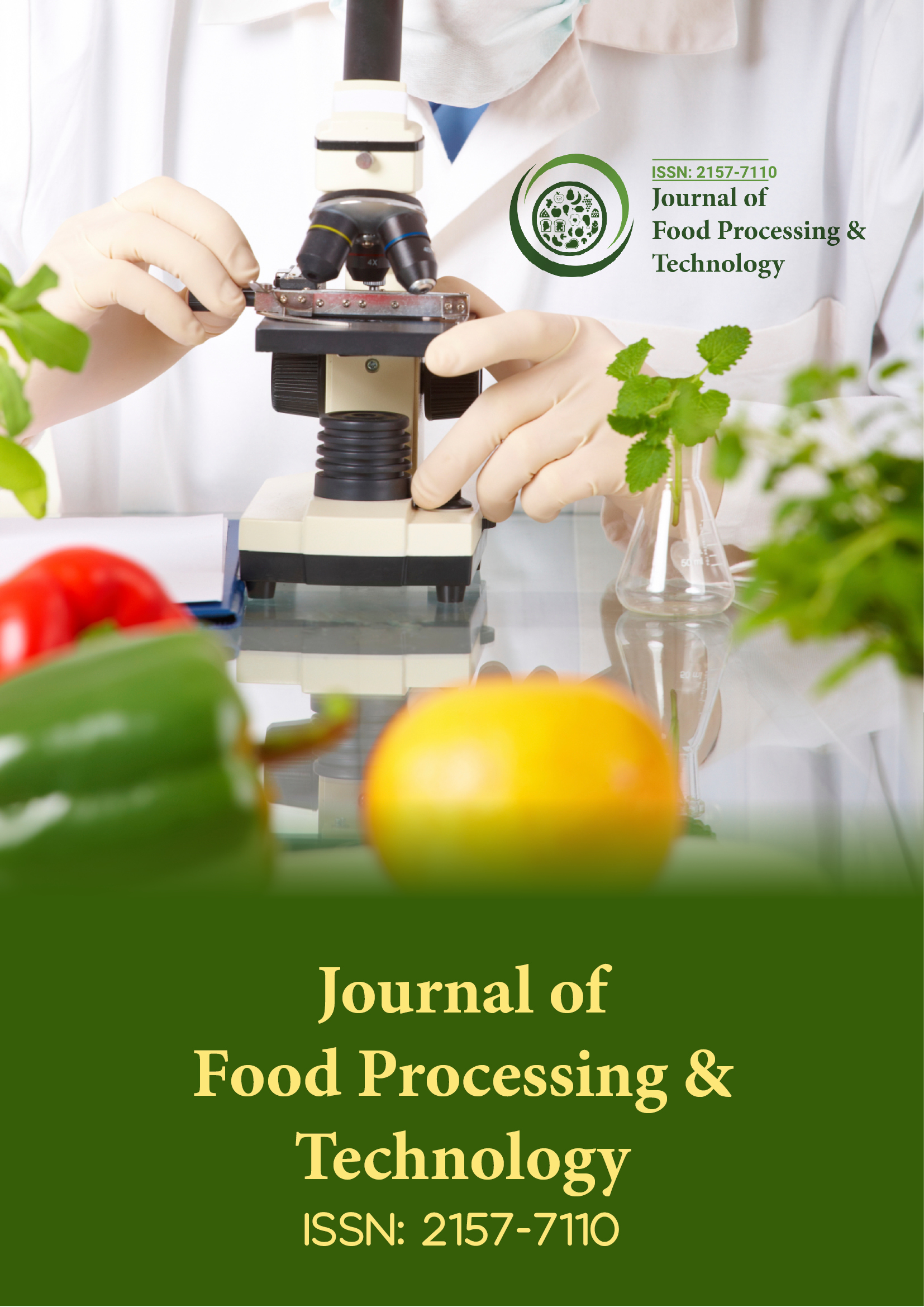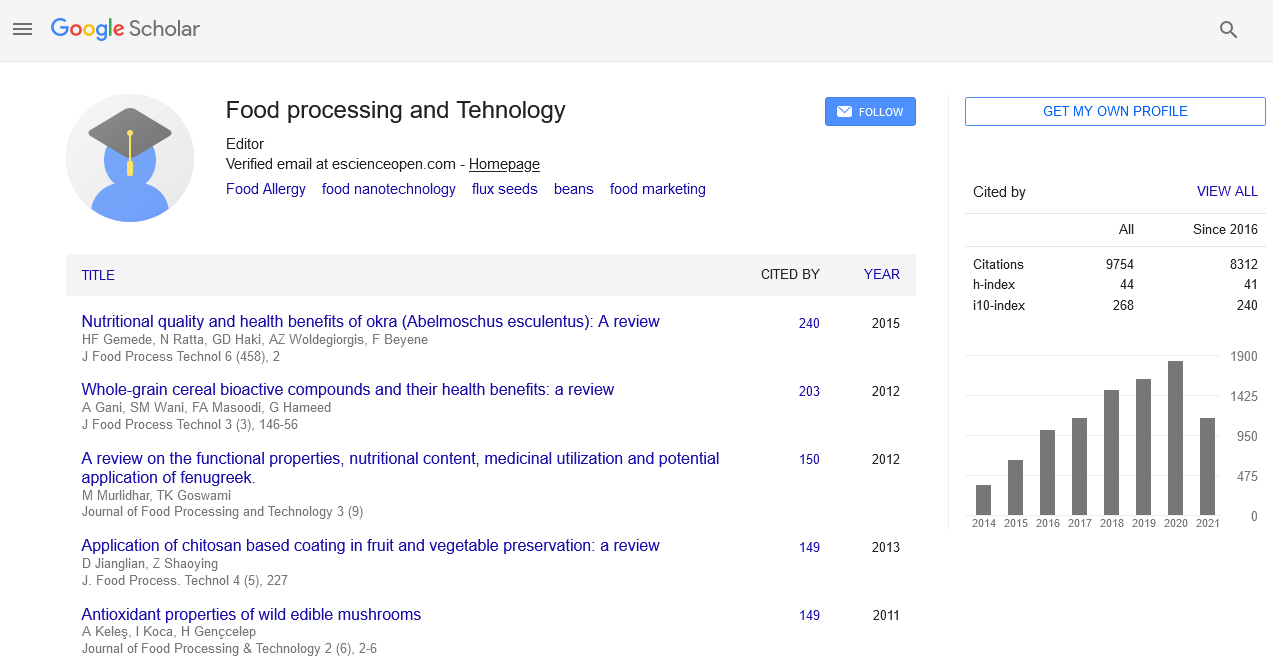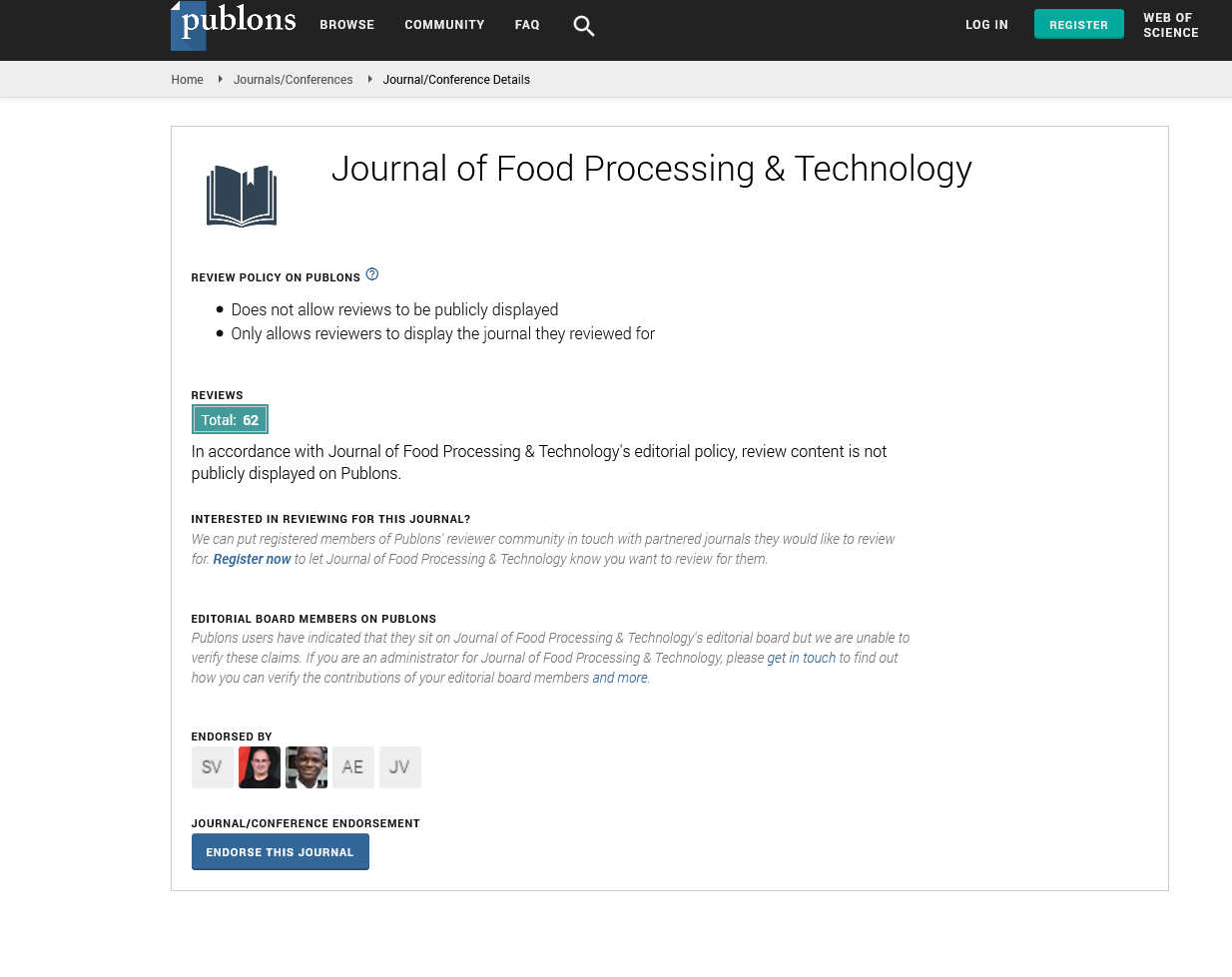Indexed In
- Genamics JournalSeek
- Academic Keys
- JournalTOCs
- China National Knowledge Infrastructure (CNKI)
- Access to Global Online Research in Agriculture (AGORA)
- Centre for Agriculture and Biosciences International (CABI)
- RefSeek
- Directory of Research Journal Indexing (DRJI)
- Hamdard University
- EBSCO A-Z
- OCLC- WorldCat
- Scholarsteer
- SWB online catalog
- Publons
- Euro Pub
- Google Scholar
Useful Links
Share This Page
Journal Flyer

Open Access Journals
- Agri and Aquaculture
- Biochemistry
- Bioinformatics & Systems Biology
- Business & Management
- Chemistry
- Clinical Sciences
- Engineering
- Food & Nutrition
- General Science
- Genetics & Molecular Biology
- Immunology & Microbiology
- Medical Sciences
- Neuroscience & Psychology
- Nursing & Health Care
- Pharmaceutical Sciences
Commentary - (2025) Volume 16, Issue 3
Developing Gluten-Free Bakery Products Using Alternative Flours
Emily Johnson*Received: 26-May-2025, Manuscript No. JFPT-25-29651; Editor assigned: 28-May-2025, Pre QC No. JFPT-25-29651; Reviewed: 11-Jun-2025, QC No. JFPT-25-29651; Revised: 19-Jun-2025, Manuscript No. JFPT-25-29651; Published: 25-Jun-2025, DOI: 10.35248/2157-7110.25.16.1165
Description
The demand for gluten-free products has expanded significantly in recent years, driven not only by the increasing prevalence of celiac disease and non-celiac gluten sensitivity but also by a growing segment of consumers who perceive gluten-free foods as healthier alternatives. This trend has encouraged food processors, bakery manufacturers, and research institutions to explore innovative approaches for producing gluten-free bakery items that maintain desirable sensory qualities, nutritional value, and shelf life. Developing high-quality gluten-free products, however, presents unique technological challenges due to the absence of gluten, a protein complex that imparts elasticity, cohesiveness, and structure to traditional wheat-based doughs. A wide variety of alternative flours are being used in gluten-free formulations, including rice, sorghum, millet, buckwheat, quinoa, amaranth, and chickpea flours. Rice flour is commonly used due to its neutral flavor and fine texture, but it is low in protein and lacks the viscoelastic properties of gluten. Sorghum and millet flours offer added nutritional benefits, including fiber, minerals, and bioactive compounds, but alone may not provide the structure required for bread and cake products. To overcome these challenges, food technologists often incorporate hydrocolloids such as xanthan gum, guar gum, or locust bean gum, which mimic the binding and structural functions of gluten, enhancing dough elasticity, cohesiveness, and volume. Blending multiple gluten-free flours is another strategy used to improve both nutritional and functional properties. For example, combining rice flour with quinoa or amaranth flour increases the overall protein content and enhances the amino acid profile of the final product, providing a more balanced nutritional composition. Similarly, chickpea flour, which is rich in protein, dietary fiber, and micronutrients, is gaining popularity as a functional ingredient in gluten-free bakery products. Legume-based flours not only contribute to nutritional quality but also influence dough rheology and water absorption, helping to create a more desirable texture in bread, muffins, and cookies. Sensory quality remains a critical consideration in gluten-free bakery products. Consumers expect bread to have a soft, springy texture, good volume, and an appealing crumb structure—qualities that are difficult to achieve without gluten. Advances in enzymatic treatments are helping to address these challenges. For instance, transglutaminase, an enzyme that catalyzes cross-linking between proteins, can strengthen protein networks in gluten-free doughs, improving elasticity, gas retention, and overall dough stability. Other enzymatic approaches, such as amylases and proteases, can modify starch and protein interactions to enhance crumb softness and shelf life, enabling gluten-free breads to better approximate the characteristics of traditional wheat-based products.
From a nutritional perspective, gluten-free bakery products have historically been associated with lower fiber content and reduced levels of essential vitamins and minerals compared to wheat-based equivalents. Many refined gluten-free flours, such as rice or tapioca starch, are low in micronutrients, which can result in products that are energy-dense but nutritionally poor. To mitigate these limitations, manufacturers are increasingly incorporating whole grains, legumes, and seed flours into gluten-free formulations. Ingredients such as flaxseed, chia, pumpkin seed, and sunflower seed flours not only increase fiber and protein content but also provide healthy fats, vitamins, and minerals. The use of these functional ingredients helps bridge the nutritional gap between gluten-free and traditional bakery products while meeting consumer expectations for healthier, nutrient-rich foods. Innovation in gluten-free product development extends beyond formulation to include processing techniques and packaging solutions. Techniques such as sourdough fermentation, steam injection, and controlled proofing can improve dough structure, flavor, and shelf life. Sourdough fermentation, in particular, enhances taste and texture while potentially improving digestibility and bioavailability of nutrients. Packaging technologies, including modified atmosphere packaging, are also used to extend freshness and prevent rapid staling, which is a common concern in gluten-free bakery items.
The continued rise in demand for gluten-free foods ensures that research and innovation in this area will remain highly active. Advances in ingredient functionality, enzymatic treatments, fermentation, and fortification strategies are enabling gluten-free bakery products to increasingly match the sensory, structural, and nutritional quality of traditional wheat-based goods. In addition, the growing interest in clean-label and plant-based products is likely to further drive innovation, encouraging manufacturers to develop gluten-free bakery items that are not only safe for individuals with gluten intolerance but also appealing to the broader health-conscious consumer market. In conclusion, gluten-free bakery products have evolved from niche offerings to mainstream consumer choices, reflecting both medical necessity and lifestyle preferences. While the absence of gluten poses technological and sensory challenges, advances in alternative flours, hydrocolloids, enzymatic treatments, and blending strategies are enabling the production of high-quality, nutritionally enriched bakery items. Continued research and innovation will allow food processors to deliver gluten-free products that satisfy consumer expectations for taste, texture, and nutrition, solidifying their place in the modern bakery industry.
Citation: Johnson E (2025). Developing Gluten-Free Bakery Products Using Alternative Flours. J Food Process Technol.16: 1165.
Copyright: © 2025 Johnson E. This is an open access article distributed under the terms of the Creative Commons Attribution License, which permits unrestricted use, distribution and reproduction in any medium, provided the original author and source are credited.


